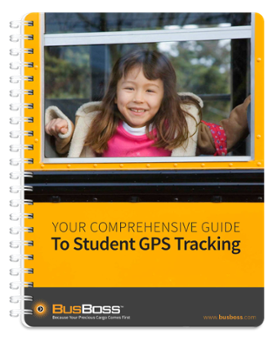5 Important Factors When Securing Wheel Chairs
published on May 26, 2023 by Sonia Mastros
route optimization, school bus routing software, school bus safety, school bus driver shortages, inefficient routes, outdated routes, inaccurate routes, route efficiency, state reporting, re-routing, bus shortages
 Has your district recently reviewed their policies for dealing with wheelchair-bound students on school buses? Ever since the Education for All Handicapped Children Act of 1976, schools have been required to make accommodations for children in wheelchairs, including bus accessibility. Dealing with wheelchair-bound students creates unique school bus safety issues, and it's vital to do everything possible to keep them safe.
Has your district recently reviewed their policies for dealing with wheelchair-bound students on school buses? Ever since the Education for All Handicapped Children Act of 1976, schools have been required to make accommodations for children in wheelchairs, including bus accessibility. Dealing with wheelchair-bound students creates unique school bus safety issues, and it's vital to do everything possible to keep them safe.
In today's blog, we wanted to touch on key aspects and best practices when working with your mobility-impaired students. If you haven't checked to ensure you're up-to-date on wheelchair policies, it's a perfect time to do so.
Five Critical Tips for Ensuring Wheelchair School Bus Safety
1. Encourage use of WC19 wheelchairs.
WC19-compliant wheelchairs are a relatively new invention, but one which can greatly increase bus safety for their users. WC19 wheelchairs include four standardized attachment points which make them much easier to tie down onboard a bus, particularly a bus that already has WC19 equipment.
Just keep in mind that, of course, you cannot deny ridership to students without these newer wheelchairs.
2. Provide shoulder\lap belts for wheelchair students.
Even if your regular riders don't have belts, you should have restraint systems in place for those in a wheelchair. These should be positioned and deployed in a way that's as much like typical seatbelts as possible. In particular, be certain that the belt is restraining the student themselves, not the wheelchair. If the wheelchair is what's restrained by the belt, the student will be left largely unprotected.
3. Carefully review all student wheelchairs prior to the first drive.
While it would be nice if every wheelchair student had a standardized WC19 chair, that probably won't be the case. Each wheelchair is manufactured differently, and will have different areas which are best suited for attachment\tie-down points. Similarly, they may present unique challenges to properly using a seatbelt.
These issues should be discovered and overcome before the first day of school. Make an appointment with the child and their parents to go over their wheelchair and any issues it might present.
4. Allow use of postural supports.
If the student needs postural support, such as for their back, neck, or head, these should always be left in place. Work around them when it comes to attaching the lap belt. Taking them away risks harming the child on a bumpy ride.
5. Always have robust bus driver training.
Never assume your driver already knows how to work with wheelchairs and their occupants. If you know there will be wheelchair students on your buses, make sure to carve out time for training on proper policies for wheelchair loading and securing.
How does your district handle wheelchair safety?
Let Us Know In The Comments Below!!






